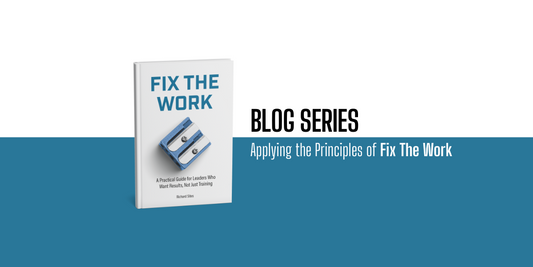Instructional Design Is Marketing. Don’t Forget That.
Richard SitesShare This Post
There’s an old saying: you can bring a horse to water, but you can’t make it drink. Same goes for instructional design. You can bring a learner to your course. You can bring a stakeholder to your review cycle. You can bring a SME to your kickoff meeting. But none of that guarantees they’ll engage, contribute, or even care.
Everyone you work with—learners, reviewers, SMEs, sponsors—is distracted, overcommitted, and running on fumes. That’s why the most overlooked truth in our field is this: instructional design is marketing.
Not marketing in the traditional, flashy, ad-driven sense. Not logos or slogans or style guides. Marketing in its simplest, most human form: empathy-driven engagement. Entrepreneur Derek Sivers once said, “Marketing is having compassion for your buyer.” We should adapt that: instructional design is having compassion for the people who need to learn something—or help build it.
That means stop barking deadlines: “Complete this training by Wednesday.” “Review this module by COB.” That’s not compassion. That’s pressure. And it rarely works. If it does work, it’s often out of obligation or fear—not curiosity or purpose. And that matters, because how someone *feels* when they interact with your content directly influences how well they learn from it.
Instead, meet people where they are. Understand what they value. Help them see—immediately—how their engagement connects to their goals, their growth, their sanity, or their success. Not yours. Theirs.
That’s what real marketing does. And that’s what real instructional design should do, too.
Here are a few simple ways to start:
- Rename your training. Don’t call it “Quarterly Compliance Refresher.” Call it “How to Not Get Fired in 15 Minutes or Less.” Make it human. Make it useful. Make it feel like it was designed by someone who gets what the learner actually cares about.
- Use your first 30 seconds wisely. Don’t start with objectives. Start with relevance. Show a real problem, a real pain point, or a real benefit. If you can’t answer the question, “Why should they care?” in the first few sentences, start over.
- Personalize outreach. When asking for a review or approval, reference what’s important to that person. “This includes the section you flagged last time—curious if we nailed it.” Even better, frame your ask in terms of what they’ll avoid if they help now. “The sooner we lock this, the less likely we’ll be rewriting next week.”
- Remove friction. Make your materials easy to access, skim, and interact with. Every click, login, or download you add is a reason for someone to check out. Default to fewer steps. Default to clarity. Don’t make people work just to see if your work is worth their time.
- Be visibly grateful. If someone engages, thank them. Sincerely. Then show them how their input improved the work. That’s marketing, too. Nothing builds goodwill like showing someone that their effort made a difference.
- Match the tone to the moment. If you’re sending a reminder, sound like a person—not a policy. “Hey, I know things are busy, but wanted to flag this for you again. You’ve got sharp eyes, and I’d love your thoughts before we go live.”
Now, here’s the controversial part: the way you market your learning—how you frame it, present it, invite people into it—is more important than any model, tool, or design decision you make.
Because no amount of elegant instructional theory matters if no one shows up.
On the other hand, if your training is a ketchup-stained Post-it Note with content scrawled in crayon—but people believe it will help them—they’ll engage. They’ll try. And they’ll improve.
Good learning doesn’t live in a vacuum. It lives in the minds of busy, messy, overworked humans. So don’t just design learning. Market it. With compassion. With clarity. With purpose.
Because the learning that stands out—the learning that sticks—is the learning that shows up like a helpful friend, not a task to avoid.




